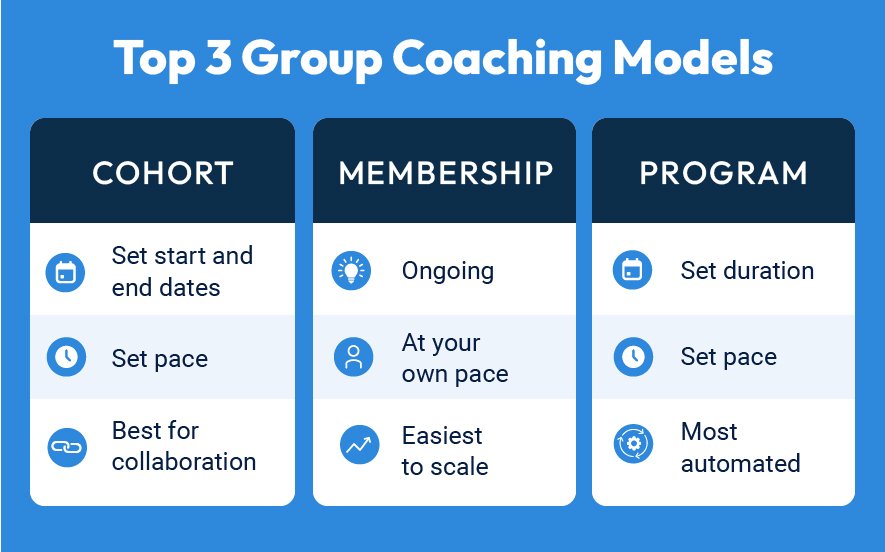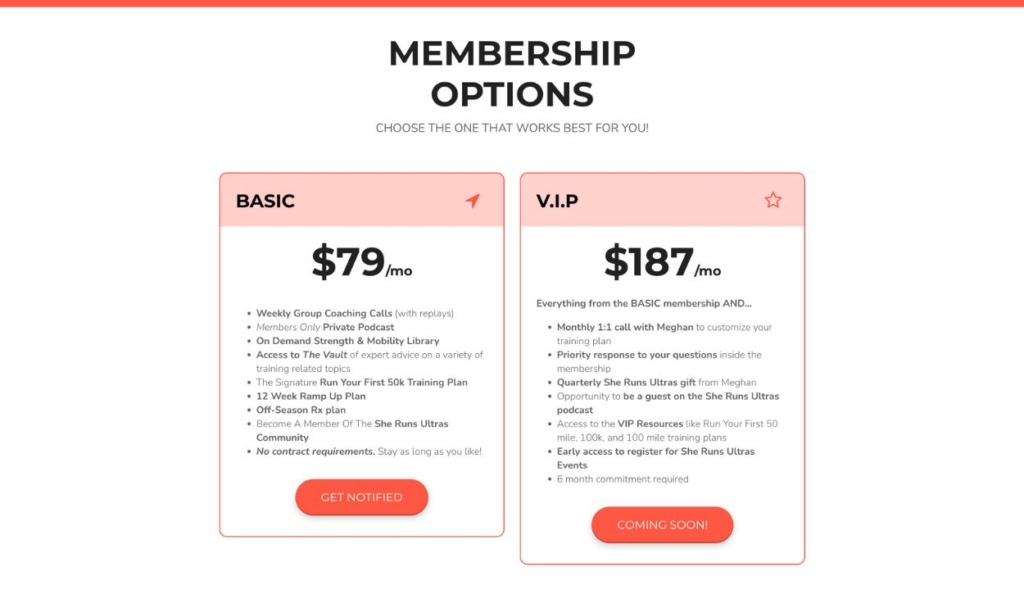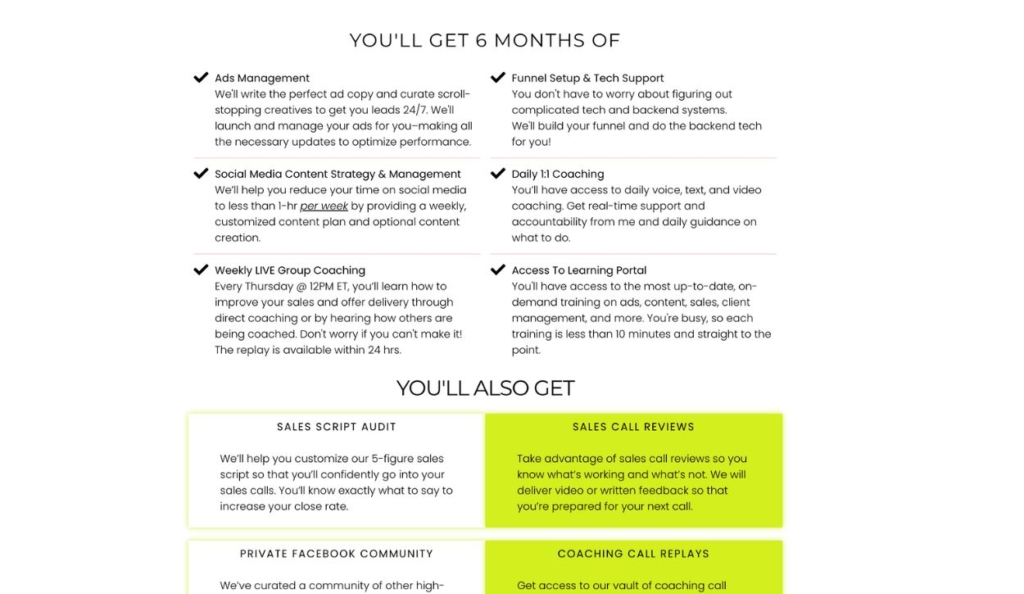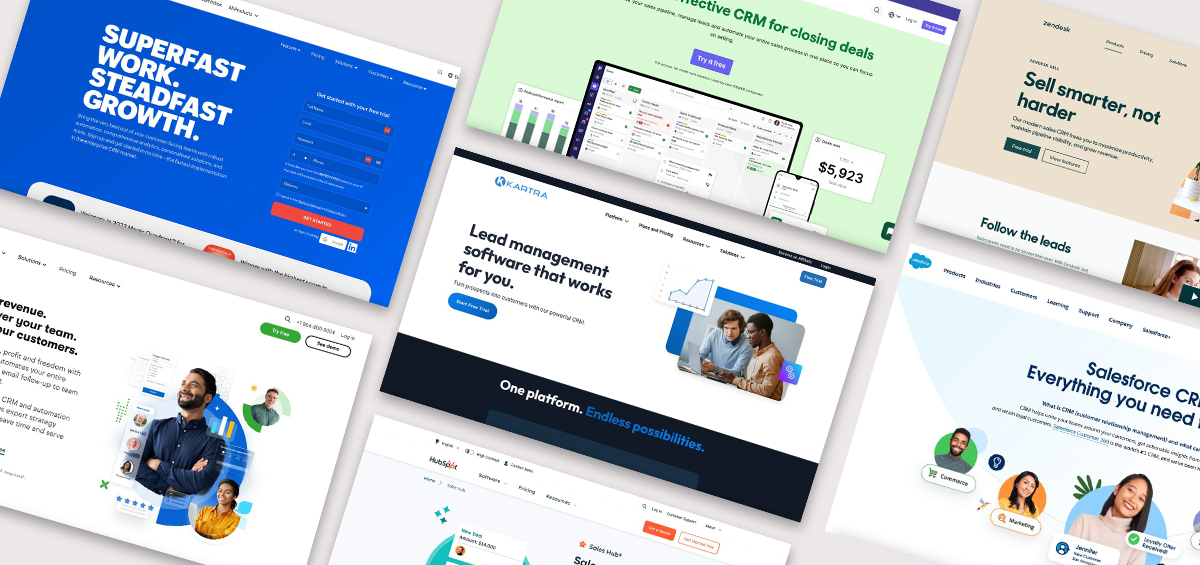One-on-one coaching is the bread and butter of most online coaching businesses. It’s straightforward, it’s intuitive, and it’s a great place to start. But at some point, it becomes difficult to scale. After all, you only have so many open slots on your calendar! Running a group coaching program is a great way to grow your business sustainably, and it allows your coaching clients to reap all the benefits of learning alongside others.
Here at Kartra, we’re passionate about giving online coaches the tools they need for long-term growth. Read on to learn how to run a successful group coaching program that drives sales and keeps clients engaged!
Benefits of Group Coaching
Group coaching offers many benefits for both coaches and clients.
For coaches: group coaching is an efficient use of time, promotes your brand to a wider audience, and is a more sustainable source of income than individual coaching.
For clients: group coaching adds accountability, provides insight from diverse perspectives, and fosters a sense of community by uniting people around common goals and shared interests.
Group Coaching Models to Explore
Although there’s no one-size-fits-all approach to coaching, most types of group coaching programs fall into one of three categories: a cohort-based model, a membership model, or a program model.

Cohort
In a cohort model, the group goes through the program together at the same time and pace. It’s very similar to an online course. This model makes the most sense for coaching programs with specific, measurable learning outcomes that can be achieved by everyone who signs up (and remember, you can be selective about who is accepted into the program).
For example, a career coach could guide one cohort of students at a time through a program that covers how to write a resume, nail interviews, and negotiate benefits. At the end of the program, each client would have all of the guidance they need to land their next job.
Membership
A membership model isn’t quite as honed in on a particular learning outcome. It’s more about open-ended growth and is a great way to deliver “evergreen” content — information that is useful anytime to anyone who joins the program.
Group members sign up to gain access to educational materials to work through on their own time as well as live sessions with a larger group. Membership programs drive a more consistent revenue stream than cohorts since they don’t have a set duration.
Take the same example of a career coaching program. Instead of being focused on a particular goal (like landing a new job), a membership model might be more effective for an executive coaching program that helps clients hone their leadership skills. Coaching sessions could work through relevant scenarios, feature guest speakers, or incorporate workshops.
Program
A program model borrows aspects from both cohorts and memberships.
In this group coaching framework, the program runs for a set period of time but without a designated start date. Members sign up and are given access to materials, group sessions, and everything else that they need for the duration of the program.
This model relies on automation more than the others because the program is delivered to each member based on a predetermined schedule. Keep in mind that you’ll need a library of materials ready to go. It’s a good fit for coaches who are guiding clients to a specific learning outcome but want a less hands-on approach than coaching cohorts.
Note that for this type of coaching model to be effective, group sessions and other interactive elements will need to bring value to clients at each stage of the program.
What to Charge for Group Coaching
The right price for a group coaching package depends mostly on the value of the outcome for your clients. The value of your coaching might be estimable (like successfully learning how to get a pay raise) — or maybe it’s intangible (like learning how to be a better parent).
Competitor analysis helps measure the demand for your coaching services, but don’t feel like you have to copy what others are doing. Instead, identify a price point that:
- accurately conveys the value of your course (don’t undersell yourself!)
- makes sense for your target audience (what’s their budget?)
- meets your revenue needs (what do you need to turn a profit?)
Some coaches use a group program model to give clients a discounted rate compared to their one-on-one coaching sessions. In that case, the price of the program is relative to the price of an individual session.
However, coaching a group doesn’t have to be an affordable alternative. The group dynamic can be part of the draw! The opportunity to join a community of like-minded people with shared goals is a compelling selling point for many coaching programs.

Coach Meghan Ghould of She Runs Ultras offers two membership tiers with pricing that corresponds to her level of involvement with individual clients
How to Structure Group Coaching Sessions
Many coaches start by offering one-on-one sessions and eventually transition to a group model later on. If that’s how you started, it’s particularly important to understand how different a group session is from an individual session.
A one-on-one session affords great flexibility, customization, and hands-on involvement. With group coaching, it’s all about making sure everyone gets what they signed up for — in a way that is engaging for your clients and sustainable for your business. In other words, effective group coaching is about structure!
1. Set Clear Expectations
Every type of coaching business needs to set clear expectations, but this becomes more apparent when coaching a group of people. Without clear parameters, everyone can end up with a different vision of what they will get from the program (and what they want from you!)
Expectations for student learning outcomes
In a one-on-one session, it’s relatively easy to keep track of client progression and tailor your approach to meet their needs. But in a group coaching structure, everyone’s time and involvement are limited and need to be used as effectively as possible. This means that everyone has to be on the same page before the program starts.
Use your coaching website, strategy call, and any onboarding materials to explain exactly who the program is for, what it will accomplish in their lives, and how it will meet those goals. Include details about the program structure and explain how you plan to check in with clients.
Tip: Have Clients Submit an Intake Form
An intake form is a great tool for making sure your coaching sessions are as valuable as possible. Use the form to identify clients’ goals, questions, and any other background information that would be helpful for you to know before facilitating a group session.
Expectations for your involvement
It’s common for coaches to overstretch the first time they run a group coaching program. This is because they promise a similar level of in-depth involvement to a one-on-one session but then find it’s not doable with a larger group of people in a limited amount of time!
Make sure your students know what they can expect from you as the coach and that it’s something you can reliably deliver.
For example, a fitness coach might promise an individual client that they will tailor-make an intensive training program for the client’s unique goals and lifestyle. However, for a cohort of 15 students, the same coach might instead present a standard training program that all students agree to. The coaching sessions could instead focus on optimizing performance.

Entrepreneur and coach Fo Alexander breaks down the details of what clients can expect from her Monetized Mom Mastermind program
2. Have a Plan for Keeping Everyone Engaged
Getting each person to engage with the program is essential for keeping them from dropping out. Plan how you will set boundaries (for the talkers) and how you will draw everyone into the conversation (for the introverts).
For example, if everyone in the group needs to share their comments or questions, consider allotting an amount of time for each person to talk at the beginning or end of the session. Establish rules to facilitate interaction, and stick to the rules you set. You’ll demonstrate that you’re in control of the conversation and that you respect everyone’s time and input.
Since not everyone enjoys talking in a large group setting, we recommend providing multiple opportunities for engagement. Here are some ideas:
- Open discussion time
- Small group discussions
- Designated speaking time
- Pre-session questionnaire
- Live chat
- Discussion forum
- Quizzes or assessments
- Social media groups
3. Make Sure It’s Scalable
Your plan for your online group coaching program should account for future growth. Needless to say, there’s a big difference between coaching a group of ten people and a group of 100 people! Determine your long-term goal and ensure your course structure has a sustainable path.
If your cohort doubles in size next time around, will clients still get the same value out of the program? Will you have enough time to accommodate a larger group?
Thinking through these questions ahead of time will help you to grow your brand sustainably. You may find that you need an enrollment limit, more training resources to supplement coaching sessions, or even a team of support coaches.
And remember that increasing the number of seats isn’t the only way to grow. We’ve seen coaches enhance materials and experiences to build larger membership programs, offer multiple membership tiers, sell online courses, and find all types of ways to monetize their coaching skills.
Interested in learning how to sell an online course? Check out our guide for beginners.
Grow Your Coaching Business with Kartra
Kartra’s all-in-one platform for coaches is built for sustainable growth with all the coaching tools you need, all in one place:
- Membership site software
- Landing page and form builder (with templates)
- Native video and webinar functionality
- Sales funnel builder
- Email marketing
- Data analytics
…and more.
For many online coaches, growing their business involves integrating multiple software applications and racking up subscription costs. It shouldn’t have to be that way!
Kartra is a comprehensive platform with everything you need to create a great experience for your clients — now and in the future.


